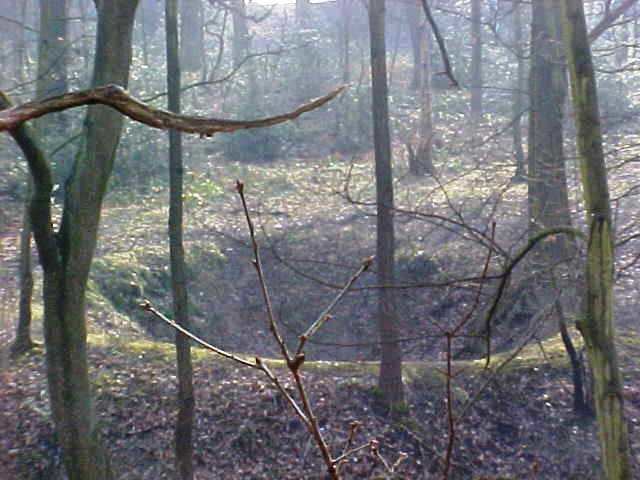 | ||
A bell pit is a primitive method of mining coal, iron ore or other minerals where the coal or ore lies near the surface. A shaft is sunk to reach the mineral which is excavated by miners, transported to the surface by a winch, and removed by means of a bucket, much like a well. It gets its name because the pit in cross section resembles a bell.
Typically, no supports were used and mining continued outwards until the cavity became too dangerous or collapsed at which point another mine was started, often in close proximity. This type of mine was in use in prehistoric times, the Middle Ages, and a few continued in use until the early 20th century in the region around Ford, Northumberland. Such pits are common at prehistoric flint working sites such as Grime's Graves in Norfolk and also in the coal mining areas of Yorkshire, the Forest of Dean, and Leicestershire.
Bell pits often flooded due to a lack of a drainage system. This, together with the lack of support and the likelihood of collapse, meant they had a limited lifespan. The remains of bell pits can sometimes be identified by depressions left when they collapsed. Bell pits were not very effective for mining as they did only partially exploit the resources.
